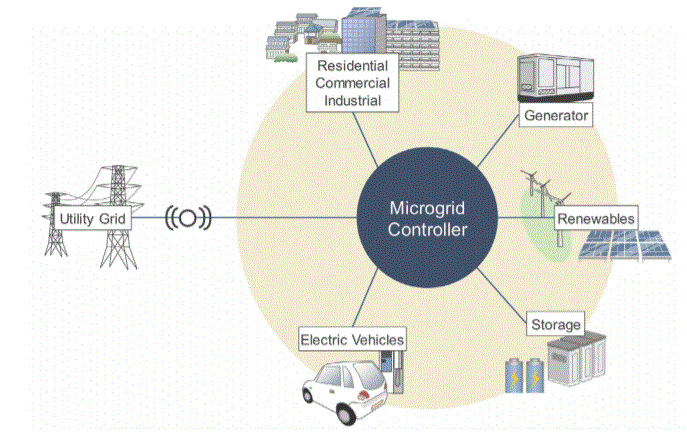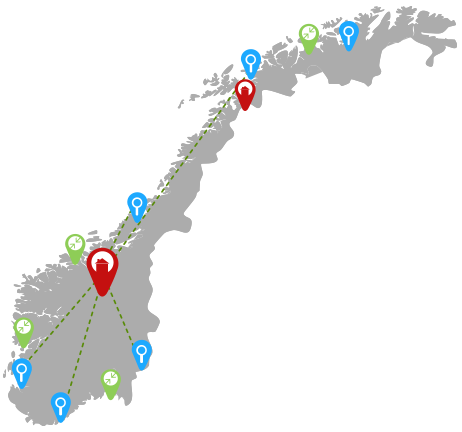This article was originally posten on the GSGF homepages: globalsmartgridfederation.org/[…]
The deployment of renewables such as PV and wind energy is continuously increasing. Since these distributed energy sources are intermittent in nature and thus unable to provide a constant power flow, they cause small fluctuations in the grid which the conventional operation system is not designed to handle. A possible solution is the use of microgrids. Microgrids are used to balance fluctuations from renewables at the local level, by utilizing various storage and load resources. They are able to integrate large amounts of intermittent renewable energy sources into the system and balance demand and supply efficiently.
Microgrids offer a lot of benefits for both the consumer and the network operator. On the consumer side, they enable renewables deployment, carbon footprint reduction, increased resiliency in case of cyber-attacks or natural disasters, increased PV self-consumption, uninterrupted power supply and electricity bill reduction. On the operator side, they enhance grid and system operation which in return means lower costs for upgrading or investing in the grid.
While there are high expectations for microgrids, their implementation is still in a demonstration phase, primarily due to financial barriers. Most of the case studies have been granted subsidies but for microgrids to be deployed on a commercial scale, their economics must be improved by reducing the cost of microgrid technologies and increasing the revenue of microgrid businesses.
A rapid decrease in the cost of renewables has improved the economics of microgrids. Efforts have been taken in reducing the cost of microgrids as well as integrated systems, for instance with the rise of modular and scalable microgrid systems. Standardization of control and communication technologies is well on its way and should enable multi-vendor microgrid systems, increasing cost competitiveness. In the future, peer to peer trading of energy within the microgrid using blockchain technologies will further drive down microgrid costs.
In parallel, more work on the regulatory side will be needed to support the development of microgrid business models. In particular, the ownership models of microgrids should be straightened out by clarifying by whom microgrids can be owned and operated in the regulations. Additionally, the services and values offered by microgrids should be properly evaluated and remunerated; for instance, by allowing microgrids to participate in various electricity markets. If revenue sources become clearer, risks associated with microgrid projects could be reduced, facilitating financing for these projects.
It is clear that the commercial deployment of microgrids has struggled due to high costs and uncertainty surrounding their business models. However, with the ongoing cost reductions and changes in regulatory frameworks to encourage microgrid business models summed up above, microgrids will shift from pilot to commercial deployment.
-
17-08-07 Press Release ‘Microgrids: from pilot to commercial deployment’
-
Download the report ‘Microgrids: from pilot to commercial deployment’
Del på linkedIn









